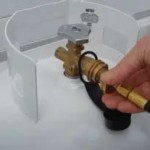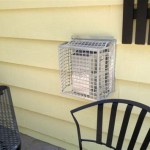Sandstone Fireplace Cladding: Enhancing Aesthetics and Functionality
Sandstone fireplace cladding represents a popular choice for homeowners seeking to enhance the visual appeal and potentially increase the thermal efficiency of their fireplace. The material, derived from sedimentary rock composed primarily of sand-sized grains of quartz, feldspar, and iron oxides, offers a unique combination of natural beauty, durability, and relative ease of installation. This article will delve into the properties of sandstone, its various applications in fireplace design, installation considerations, and the maintenance required to preserve its aesthetic value over time.
The prevalence of sandstone in construction history can be attributed to its ready availability in various geological formations, its inherent strength, and its attractive color variations. Sandstone is frequently quarried and processed into various forms suitable for cladding, including thin veneers, larger slabs, and intricately carved details. The texture and coloration of sandstone are determined by the specific mineral composition and the geological processes involved in its formation, resulting in a diverse range of aesthetic options for fireplace design.
Fireplace cladding serves multiple purposes, extending beyond purely aesthetic enhancements. It acts as a protective barrier for the underlying structure of the fireplace, shielding it from the direct heat of the fire. Additionally, cladding can improve the thermal mass of the fireplace, which refers to its ability to absorb, store, and slowly release heat. Materials with high thermal mass, such as sandstone, can contribute to a more consistent and comfortable room temperature by radiating heat long after the fire has died down. The extent to which sandstone contributes to thermal efficiency depends on its thickness and the overall design of the fireplace. Furthermore, cladding can contribute to the overall fire safety of the structure by providing a non-combustible surface around the firebox.
Understanding the Properties of Sandstone
Sandstone's suitability for fireplace cladding stems from its inherent properties. One of the most significant characteristics is its resistance to heat. While sandstone is not entirely impervious to thermal damage, it possesses a relatively high tolerance, making it a viable option for facing fireplaces. The specific heat resistance varies depending on the type of sandstone and its composition, but generally, it can withstand the fluctuating temperatures associated with a typical fireplace environment. However, prolonged exposure to extreme heat can potentially lead to cracking or discoloration. It is important to consult with a professional regarding the specific type of sandstone and its suitability for the intended application.
Durability is another key attribute. Sandstone, in general, is a relatively durable material, resistant to weathering and erosion. However, its porosity can make it susceptible to staining from soot, smoke, and other contaminants. Sealing the sandstone is a common practice to mitigate this risk and improve its resistance to moisture absorption. The porosity of sandstone also affects its susceptibility to freeze-thaw cycles, which can cause cracking and spalling in colder climates. Proper installation techniques, including adequate drainage, are crucial in minimizing the potential for water damage. The selection of a dense and less porous variety of sandstone can also improve its resistance to weathering.
The aesthetic versatility of sandstone is a major factor in its popularity. The material is available in a wide range of colors, from light beige and cream to deep reds, browns, and even purples. These variations are due to the presence of different minerals, such as iron oxides, within the sandstone matrix. The texture of sandstone can also vary, from smooth and polished to rough and textured, providing a wide range of design possibilities. The natural variations in color and texture create a unique and aesthetically pleasing appearance, contributing to the overall character of the fireplace. The ability to carve and shape sandstone allows for custom designs and intricate detailing, further enhancing its aesthetic versatility.
Design Considerations for Sandstone Fireplace Cladding
When incorporating sandstone into a fireplace design, several factors must be considered. The overall style of the room should influence the choice of sandstone, ensuring that it complements the existing décor. For example, lighter shades of sandstone can create a bright and airy feel in a contemporary space, while darker, more textured varieties can contribute to a rustic or traditional aesthetic. The size and shape of the fireplace will also dictate the size and arrangement of the sandstone cladding. Larger fireplaces may benefit from larger sandstone slabs, while smaller fireplaces may require smaller pieces to maintain visual balance.
The texture and color of the sandstone should be carefully selected to create the desired effect. A smooth, uniform texture can create a modern and sophisticated look, while a rough, textured surface can add visual interest and depth. The color of the sandstone should also complement the surrounding walls, flooring, and furniture. Contrasting colors can create a dramatic effect, while complementary colors can create a more harmonious and cohesive design. It's also important to consider the lighting in the room, as different lighting conditions can affect the perceived color and texture of the sandstone.
The design should also consider the surrounding elements of the fireplace, such as the mantel, hearth, and firebox. The sandstone cladding should seamlessly integrate with these elements to create a unified and aesthetically pleasing whole. The mantel, for example, can be made from sandstone or a contrasting material, depending on the desired effect. The hearth, which is the area directly in front of the firebox, should be made from a non-combustible material, such as sandstone, and should be sized appropriately to protect the surrounding floor from sparks and embers. The firebox itself should be properly sized and installed to ensure safe and efficient combustion.
Installation and Maintenance of Sandstone Fireplace Cladding
Proper installation is crucial to the longevity and performance of sandstone fireplace cladding. It is generally recommended to engage a qualified professional with experience in working with stone materials. The installation process typically involves preparing the underlying surface, applying a mortar or adhesive to secure the sandstone, and grouting the joints between the stones. The substrate, such as brick or concrete, needs to be clean, structurally sound, and properly prepared to ensure adequate adhesion. Mortar should be specifically formulated for stone cladding and applied according to the manufacturer's instructions.
The cutting of sandstone requires specialized tools and techniques to avoid chipping or cracking. A wet saw with a diamond blade is commonly used to achieve clean and precise cuts. Dry fitting the sandstone pieces before applying mortar is a recommended practice to ensure proper fit and alignment. Grouting the joints between the sandstone pieces provides a watertight seal and enhances the overall aesthetic appearance. The grout should be carefully selected to match the color of the sandstone and applied evenly to create a consistent finish. Excess grout should be promptly removed to prevent staining the sandstone.
Maintenance of sandstone fireplace cladding involves regular cleaning and periodic sealing. Regular cleaning with a soft brush and mild detergent can help remove dust, soot, and other surface contaminants. Avoid using harsh chemicals or abrasive cleaners, as these can damage the sandstone. Periodic sealing with a penetrating sealant can help protect the sandstone from staining and moisture absorption. The frequency of sealing depends on the type of sandstone, the environment, and the type of sealant used. It's important to select a sealant that is specifically designed for use on natural stone. Inspecting the cladding regularly for cracks, chips, or other damage is also important. Any necessary repairs should be carried out promptly to prevent further deterioration. Minor cracks can often be repaired with epoxy-based fillers specifically designed for stone repair. More extensive damage may require the replacement of individual sandstone pieces.
Sandstone fireplace cladding provides a blend of aesthetic appeal and functional benefits, making it a popular choice for homeowners. By understanding the properties of sandstone, considering design factors, and adhering to proper installation and maintenance practices, it is possible to create a beautiful and durable fireplace that will enhance the value and enjoyment of any home.

Coastal Cladding Stone Wall Veneer

Coastal Cladding Stone Wall Veneer

Coastal Cladding Stone Wall Veneer

Stone Cladding On Fireplaces Need To Know Nustone

Bring Nature Inside With Infinitistone Stone Cladding

Coastal Cladding Stone Wall Veneer

Freeform Natural Stone Wall Cladding Feature Fireplaces

The Perfect Sandstone Firepit With Gosford Quarries

Grenada Frost Inside Outside Stone Cladding

Fireplace Cladding Ideas Stone Brick Timber Other Modern Options Architecture Design
Related Posts








